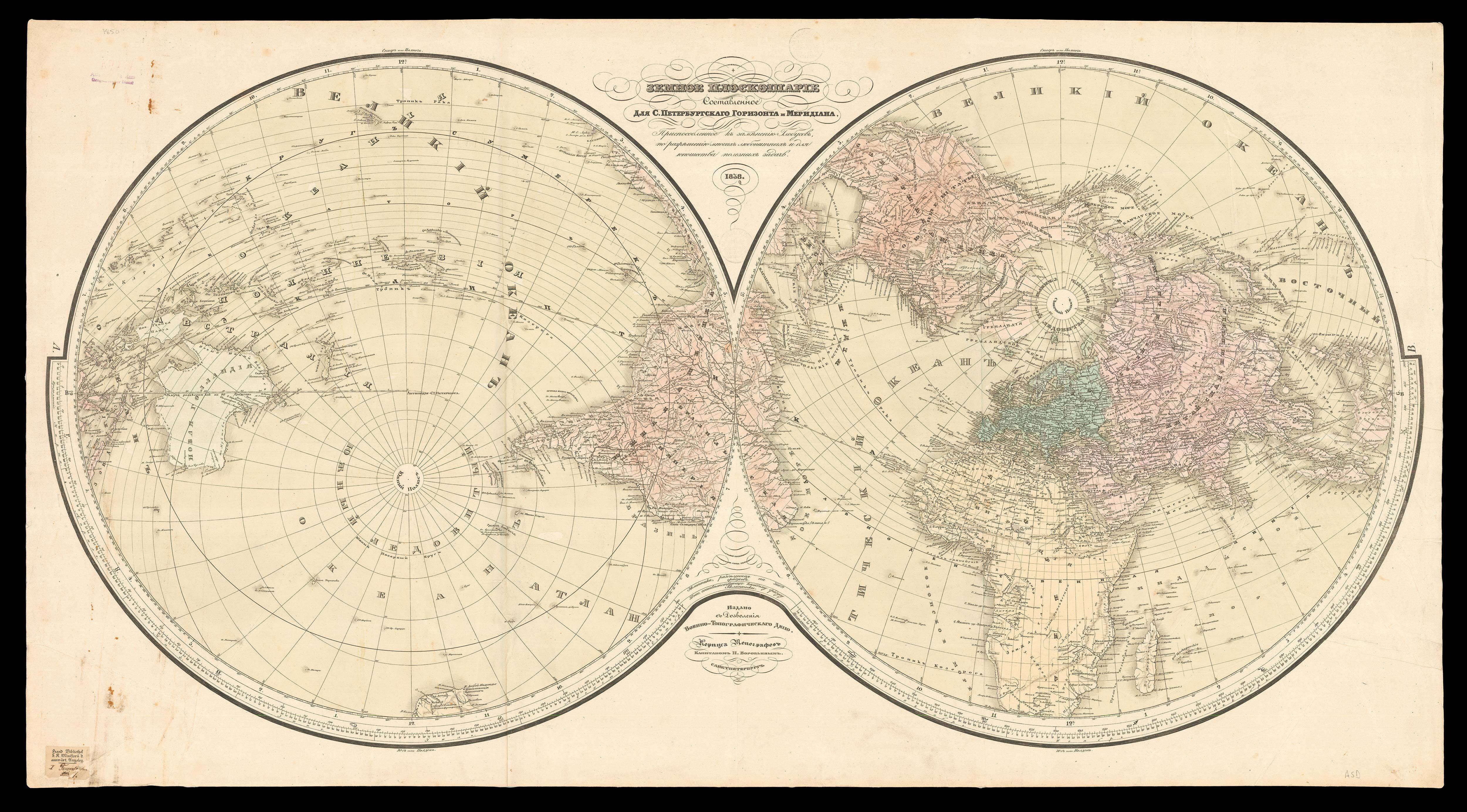
Explanations and Sailing Directions to accompany the Wind and Current Charts approved by commodore Charles Morris, Chief of the Bureau of Ordnance and Hydrography; and published by authority of Hon. J. C. Dobbin, Secretary of the Navy… Seventh Edition – Enlarged and Improved.
- 作者: MAURY, Matthew Fontaine
- 出版地: Philadelphia
- 出版商: E.C. and J. Biddle, No. 8 Minor Street
- 发布日期: 1855.
- 物理描述: 4to, (280 by 230mm), xxxvi, 869, twenty-two plates (twenty engravings and two colour lithographs), appendix comprised of a thirty-three-page lithographed facsimile of a ship's log, illegible inscription in ink to front pastedown, gift inscription to front free endpaper 'E. Lane – to E. Matthews', marginal dampstaining and foxing throughout, final leaves extensively water-stained but still readable, bound in contemporary sail-cloth pasted over a thin paper wrapper, manuscript spine title in ink, binding water and oil stained, most likely evidence of frequent use onboard a ship.
- 方面: 280 by 230mm. (11 by 9 inches).
- 库存参考: 15333
笔记
Matthew Fontaine Maury (1806-1873), nicknamed the ‘pathfinder of the seas’, is credited with founding the science of modern oceanography. Maury achieved this distinction by championing his revolutionary system of collecting scientific data about all the oceanic phenomena taken from all over the world, which resulted in a plethora of new and useful scientific discoveries. The results of his research were then presented in a practical form, oftentimes sea charts and navigation manuals, which could be easily read, understood and used by all types of mariners.
Maury’s seafaring days in US Navy came to an abrupt and early end in 1839, when he was badly injured in a stagecoach accident. In 1842, unfit for active service and already well-known as a scientist and author, he was appointed superintendent of the Depot of Charts and Instruments. In his new position, Maury became the librarian of the navy’s vast yet unorganised collection of ship’s log books, records and maps. Having long since realized the potential usefulness of a wind and current chart, he set about the task of making such a chart by using data compiled from the Navy’s collection of old ship’s logs. He published his first wind and current chart in 1847, and followed it in 1848 with a short pamphlet titled the ‘Abstract Log for the Use of American Navigators’. Maury’s pamphlet contained an explanation of his wind and current chart, as well as directions for how to take a variety of scientific observations at sea and how to record them in a standardised manner. This text was greatly expanded over the years into the present work. Ship captains were encouraged to send their logs, filled in with scientific observations, back to Maury so that he could compile and tabulate the data, revise his old charts and issue new charts on a wide range of topics, such as sea level, whale migration and weather. Captains who sent Maury their logs would receive free copies of his charts and sailing directions, which had proven themselves to be incredibly effective – a ship following the route Maury suggested could cut as many as fifteen days off what had previously been a fifty-five-day journey. This success created considerable interest in Maury’s work, and by 1851 more than one thousand American ships were recording scientific observations and relaying them back to Maury’s Washington D.C depot.
In 1853, Maury sailed to Europe in order to promote his universal system of scientific observation to an international audience. The United States, at Maury’s behest, had instigated a conference in Brussels that was attended by naval officials of most of the major seafaring nations in Europe. The Brussels Meteorological Conference of 1853 was a huge success in terms of international co-operation for the sake of science, and the navies and merchants of England, Portugal, the Netherlands, Belgium all agreed to adopt Maury’s system and send him their abstract logs. Soon afterwards, other nations who had not attended the conference joined in the effort. As a result, nations owning three-fourths of all marine shipping in the world were sending observations to Maury. As Maury states in his introduction, “it is the largest fleet that has ever been seen to act in concert, for any purpose whatsoever, since the world began.”
The 1855 seventh edition of ‘Sailing Directions’ includes a group of Maury’s most important scientific articles dealing with both meteorological and hydrographic subjects. Of particular note is his pioneering study on the Gulf Stream, as well as his study about the ocean’s floor. Maury goes on to give an account of his participation in the Brussels Conference in 1853, followed by specific sailing instructions for voyages to and from major ports. He ends with practical information on how to take part in his project, a series of charts illustrating his scientific writings and a facsimile ship’s log illustrating how his ‘Abstract Log’ should be correctly filled out. There were numerous editions of Maury’s ‘Sailing Directions,’ with five editions published between 1851 and 1855. The final edition, the eighth, was published in two volumes from 1858-59.
 地图
地图  地图集
地图集  珍本
珍本  版画
版画  天文仪器
天文仪器 










